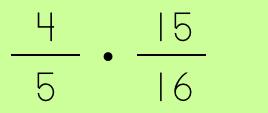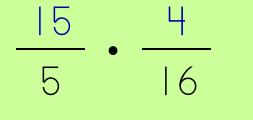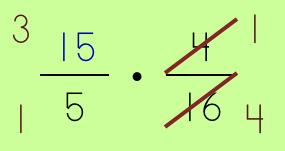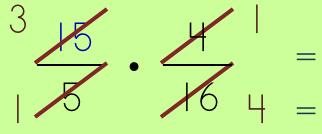 |
||||||||
 |
||||||||
 |
||||||||
©2009–2016 Sherry Skipper Spurgeon. All Rights Reserved. |
||
Multiplying fractions is not a difficult concept; in fact, it is much easier than adding fractions! All you do is multiply the numerators and then multiply the denominators! Of course, you then have to remember to reduce the fraction to lowest terms… There IS a way, however, to make things a bit easier so that you can reduce to lowest terms earlier and I am certain you want to learn the method, right? |
|
 |
|||
Here's our problem. |
|||
Re-write the problem but switch the numerators. The Commutative Property of Multiplication says that you can move the factors around and the product remains the same so go ahead and move them around some. |
|||
 |
|||
 |
||||||
Reduce (simplify), if possible. |
||||||
|
|||||||||||||||||
Multiply the numerators. Multiply the denominators. |
|||||||||||||||||
Check to make sure the fraction is in lowest terms. Note: Some teachers will require improper fractions to be converted to mixed numbers. Otherwise, that's it! Woo-hoo! Download a practice page. Multiplying Fractions |
||

